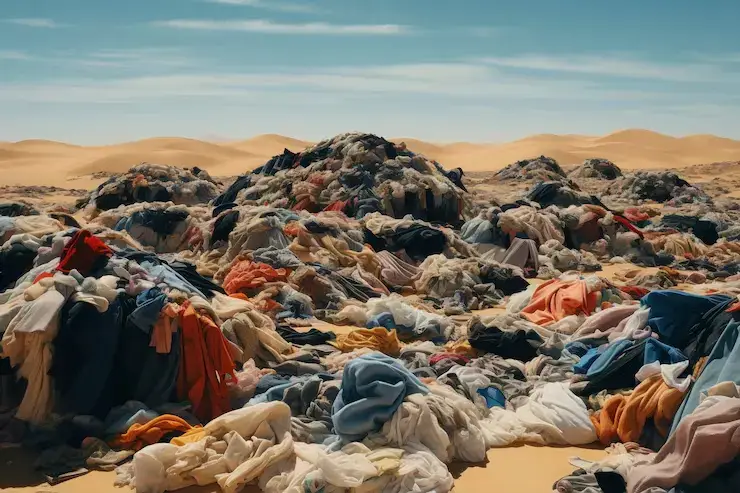Every time we buy a new piece of clothing, we unknowingly take part in one of the most environmentally polluting industries in the world. The fashion industry, especially what’s known as fast fashion, has become a symbol of excessive consumption that threatens natural ecosystems and depletes resources at an alarming rate. In this blog, we shed light on the relationship between fashion and environmental pollution, exploring its effects, sustainable solutions, and the consumer’s role in minimizing the crisis.
What Is the Environmental Pollution Caused by Fashion?
The environmental pollution caused by the fashion industry manifests in many forms: massive carbon emissions, extreme water consumption, intensive chemical use, and accumulation of textile waste. These effects are not limited to factories — they stretch across every stage of the supply chain, from farming to store shelves.
Fast Fashion: Between Profit and Environmental Destruction
Fast fashion depends on producing large quantities of cheap, low-quality clothing to keep up with constantly changing seasonal trends. This model encourages overconsumption and quick disposal of garments, worsening the environmental impact.
The Environmental Impacts of the Clothing Industry
- Carbon emissions: The fashion industry is among the highest contributors to global emissions, accounting for up to 10% of total global carbon output.
- Water consumption: It can take over 7,000 liters of water to produce just one pair of jeans.
- Chemical use: Bleaching, dyeing, and finishing processes rely heavily on harmful substances.
How Much Water and Resources Does the Fashion Industry Consume?
The clothing industry consumes vast amounts of water and natural resources, especially in cotton farming and fabric processing. For instance, conventional cotton requires huge volumes of water, fertilizers, and pesticides. Industrial processes like washing and dyeing are also among the top contributors to global water pollution.
Carbon Emissions Across the Supply Chain
Fast fashion supply chains rely heavily on air freight and international shipping, which increases carbon dioxide emissions. Moreover, many factories depend on non-renewable energy sources, further amplifying their climate impact.
Synthetic vs. Natural Fabrics: Which Is More Harmful?
- Synthetic fabrics like polyester are petroleum-based, take hundreds of years to decompose, and release microfibers into oceans with every wash.
- Natural fabrics like cotton and linen are less harmful, especially when grown organically without pesticides — but they still carry some environmental costs.
Waste From Discarded Clothing
It’s estimated that over 92 million tons of textile waste are thrown away each year, most of which ends up burned or buried in landfills. The problem is that much of this material is non-biodegradable and remains in the environment for decades.
How Do Dyes and Chemicals Affect the Environment?
Chemical dyes used to color garments release toxic substances into waterways, especially in countries without strict wastewater treatment regulations. These chemicals can contaminate groundwater and harm aquatic life in rivers and lakes.
Sustainable Solutions in the Fashion World
The shift toward sustainable fashion is no longer a luxury — it’s a necessity. Key solutions include:
- Using organic clothing and biodegradable fabrics.
- Supporting brands that adhere to eco-friendly standards, like Mamilly Jeans, which offers clothing made from natural fabrics with long-lasting designs.
- Advancing recycling technologies in fashion to reduce waste and repurpose old garments into new products.
How Can Consumers Help Reduce Fashion’s Environmental Impact?
- Avoid impulse buying and focus on quality over quantity.
- Choose eco-friendly clothing from responsible brands.
- Maintain, reuse, or donate old clothes.
- Opt for fashion made from natural or recycled materials.
- Educate yourself about consumer environmental responsibility.
The fashion industry won’t stop — but we can guide it toward a more conscious and environmentally respectful path. Real change begins with our individual choices and our support for brands that are reducing their environmental footprint, like Mamilly Jeans, which represents a model of what fashion can become when combined with ethics and responsibility.
Looking for More Conscious Fashion Options?
Explore Mamilly Jeans’ collection of natural, eco-friendly clothing, and see how your style can be part of the solution — not the problem.


